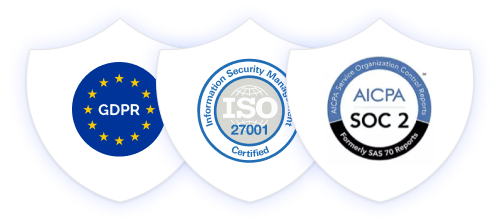

Software Development Company
Invincible Ocean is dedicated to transforming ideas into robust, scalable, and user-friendly applications.
We Build:
- Artificial Intelligence (AI) Development Company
- Metaverse Development Company
- Mobile App Development Company
- Custom Software Development


Contact Us
Our Expert Will Contact You In Next 24 Hr
Our Clients






















Services
Let’s start the journey towards success and enhance revenue for your business. Take your company to the next level.
- AI Development Company
- Metaverse AR VR Development
- Application Development
- Custom Software Development
Artificial Intelligence (AI) Development Company
Our advanced AI algorithms and technologies are tailor-made to meet your specific needs. From machine learning to natural language processing, we harness the full power of AI to drive your success.
Technology We Use:
- Text to speech
- Business Intelligence
- Data Forecasting
- Natural Language Processing
- Data Analytics
- Alexa Skill Development
Metaverse AR VR Development
Immerse your audience in unforgettable experiences with our Metaverse AR VR solutions. Explore new dimensions of engagement and interaction that redefine the future
Technology We Use:
- Unity 3D
- Augmented Reality
- Virtual Reality
- Casual Games
- Metaverse
Mobile Application Development
Embrace the digital age with our responsive web and mobile app solutions. We don’t just build applications; we engineer experiences that captivate your audience and drive engagement.
Technology We Use:
Mobile App
- React Native
- Kotlin
Custom Software Development
Leverage our expertise in crafting custom applications that address specific business challenges, streamline processes, and enhance overall efficiency. From concept to deployment, we ensure that the software is designed to scale with your business.
Technology We Use:
- Frontend
1. AngularJS
2. ReactJS
3. Bootstrap
4. HTML5
5. CSS3
6. Javascript
- Backend
1. Node.js
2. Laravel
3. Php
4. .NET
5. NextJs
Our Key Features
Services That We Deliver Makes Us Dignified As One of The Top App Development Companies.
Process We Follow
Who We Work With
As a leading Software development company in India, we worked with 100+ businesses either it is a start-up or enterprise and delivers the best solution in the industry. At Invincible Ocean, we offer a broad range of Software development services based on business requirements.
Invincible Ocean offers tailored software development services to start-ups, helping them build a strong technological foundation to kickstart their ventures effectively.
We also serve small and medium-sized businesses by providing software solutions that are scaled to meet their specific needs, helping them streamline operations and achieve growth.
Invincible Ocean is equipped to work with large enterprises, offering advanced software development services that can handle complex business requirements and support their extensive operations.
Additionally, they collaborate with agencies to provide software solutions that enhance their capabilities and help them serve their clients better.
FAQs
Software and Product Development
What is software development?
How is software development related to GST and Vehicle RC Verification APIs?
What is an API (Application Programming Interface)?
What is the software development life cycle (SDLC)?
How can I ensure the security of my software applications?
How do I integrate an API into my application?
Connect With Our Expert
Get Free Consultation Call
Get in touch
- India address- 201A SAS Tower Sector 38 Gurgaon-122003
- contact@invincibleocean.com
- India Phone no- +91-9599066061, 0124 4034247
- UK address- 30 Churchill Pl, London E14 5RE
- UK phone no- +44 7951 055951
Our Policy
See how we’ve helped everyone from big global brands to innovative entrepreneurs to build software.
Redefining Digital Onboarding Solutions
